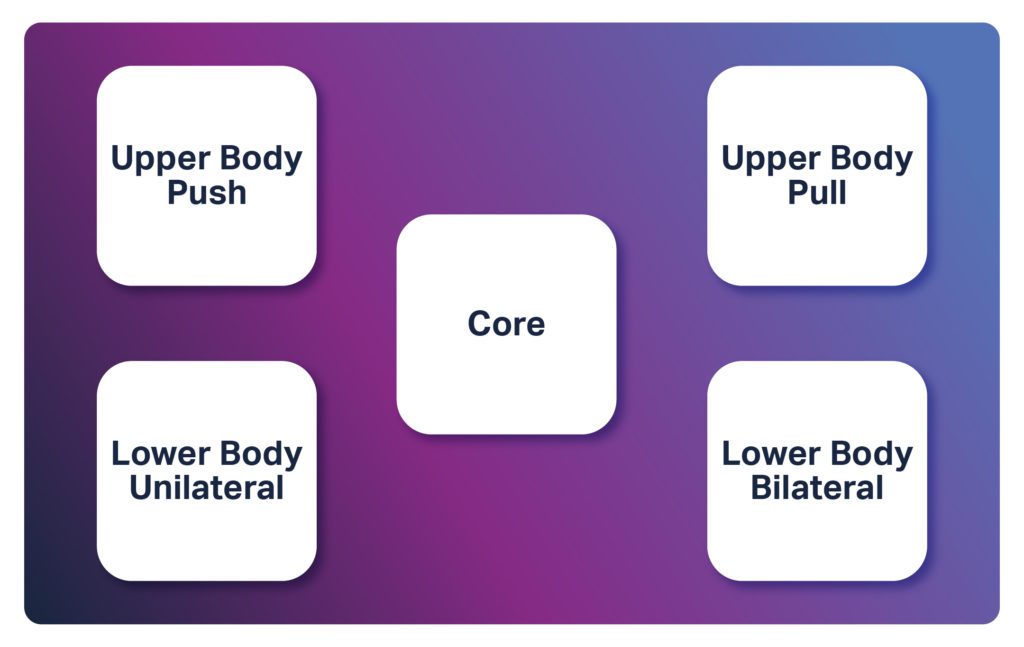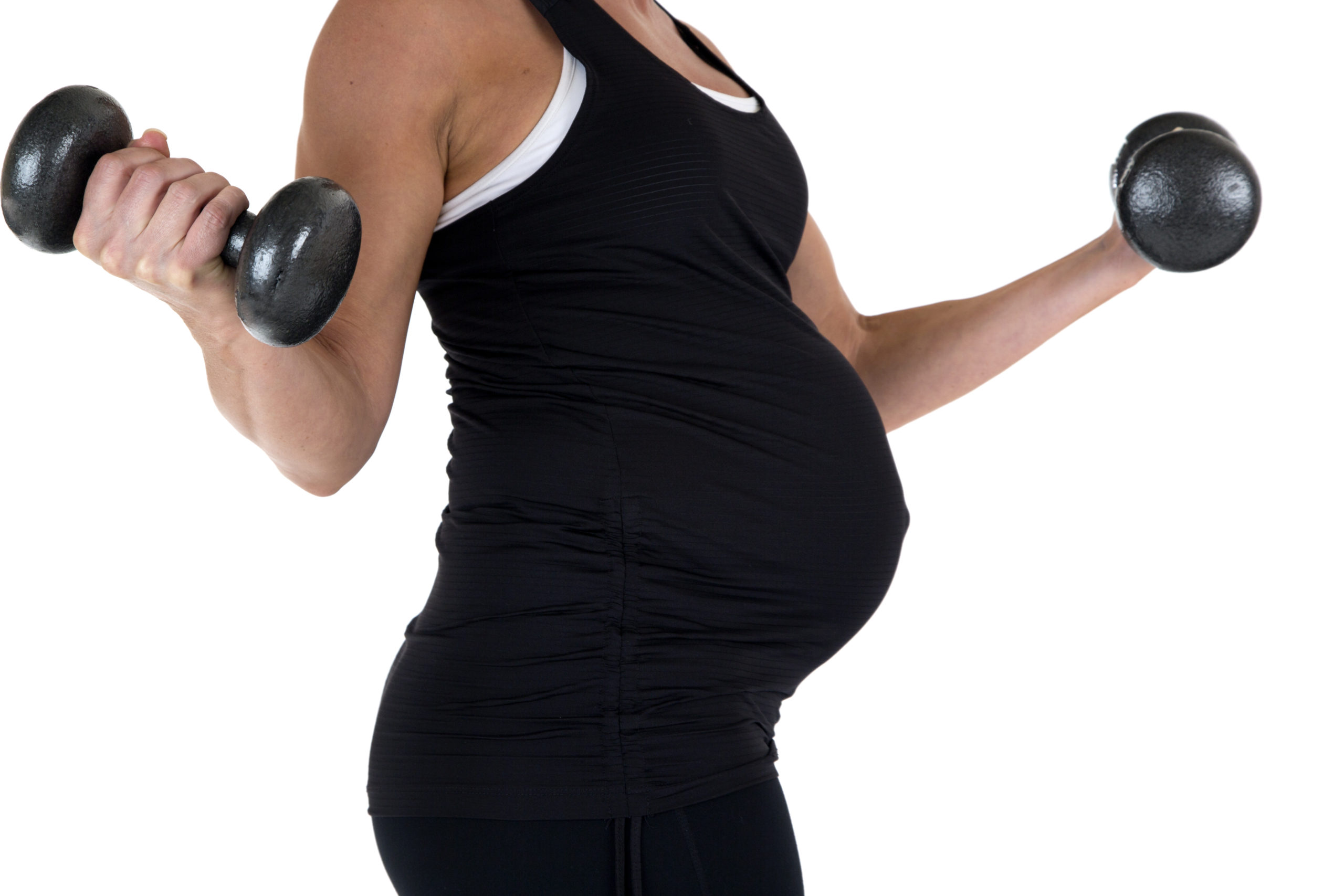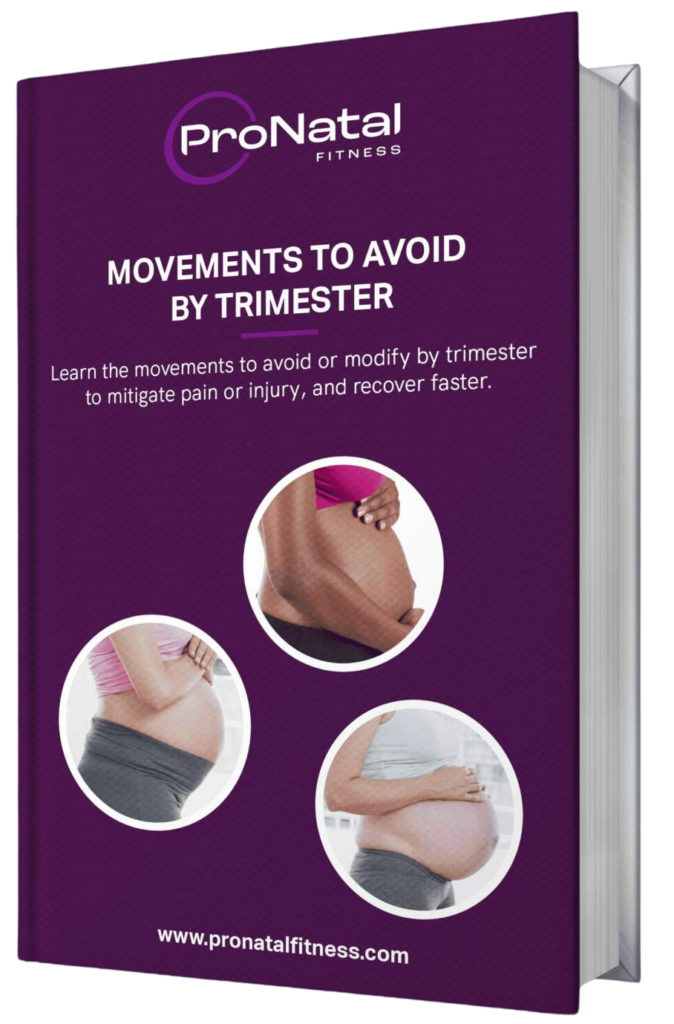While physical activity, in general, has a myriad of benefits during pregnancy, strength training is one of the very best forms of physical activity that you can do (for you and your little one). Not only is strength training safe, but it can be the key to mitigating pregnancy pains & injuries, facilitating an easier birth, and expediting your postpartum recovery.
That said, we recognize there are a lot of questions on this topic — including what the recommended strength training guidelines are, what strength exercises are safe, and what should be avoided. So, in this article, we will cover:
-
The Benefits of Strength Training During Pregnancy
-
Current Guidelines for Exercise During Pregnancy
-
The Flaw in Conventional Strength Training Guidance
-
4 Strategies for Effective Strength Training
-
What Exercises to Avoid
Benefits of Strength Training
The pregnancy journey places a great deal of stress on the body — from weight gain, to alignment shifts, mobility & stability changes, intra-abdominal pressure increase, and more. This is the reason there are, unfortunately, many “common” pains & injuries during this time — like low back pain, SI joint pain, sciatica, symphysis pubis dysfunction, diastasis recti, and pelvic floor dysfunction. Strength training has been shown to mitigate the risk of all these pains & injuries.
Strength training has also been shown to facilitate an easier labor. In fact, one large study showed the following results from weight-bearing exercise performed throughout pregnancy (Clapp, 1998):
- 75% reduction in maternal exhaustion
- 75% reduction in need for forceps or C-section
- 50% decrease in need for oxytocin
- 50% decrease in need for medical intervention due to fetal heart-rate abnormalities
- 30% reduction in the duration of the active labor phase
Beyond the benefits during pregnancy and childbirth, consider the benefits in the postpartum period. Almost immediately after delivery, the non-stop physical tasks of parenthood begin. Consider all the squatting, bending over, lifting, pushing, pulling, carrying (and carrying and carrying) you do as a new parent. Strength training during pregnancy can enable you to far more easily carry out these demands.
Current Guidelines for Strength Training During Pregnancy
In the U.S., the American College of Obstetricians and Gynecologists (ACOG) is the body that provides the official medical guidelines for prenatal exercise. Their latest 2020 guidelines state that those with uncomplicated pregnancies should be encouraged to “engage in aerobic and strength-conditioning exercise before, during, and after pregnancy” at a moderate intensity for at least 20–30 minutes per day on most or all days of the week.
ACOG goes on to list the following activities as being “safe” during pregnancy:
- Walking
- Stationary cycling
- Aerobic exercises
- Dancing
- Resistance exercises (e.g. using weights and elastic bands)
- Stretching exercises
- Hydrotherapy, water aerobics
While all these activities might be “safe,” they may not be the most effective way to prepare the body for the unique, high-stress demands of pregnancy, childbirth, and early parenthood. Let’s discuss this further.
The Flaw in Conventional Prenatal Strength Training Guidance
Conventional guidance (that you may hear from your medical provider, friends, family, or the internet) often focuses on limiting stress on the body — perhaps in decreasing weights or focusing on bodyweight only exercises — to mitigate the risk of pain or injury during a time when the body is already under so much stress.
While a key objective of any prenatal training program should be to minimize the risk of injury, reducing loads to limit stress will actually lead to a decrease in strength. Muscles need to be stressed in order to adapt and get stronger. Fortifying the body with strength training during pregnancy will help you counteract the stresses from prenatal weight gain (and all the other changes mentioned above) and minimize movement compensations. This reduces your risk of developing pains or injury.
While this may make sense in theory, how do you safely “stress” your muscles? How do you ensure you are reaping the benefits of strength training without doing something that could increase your risk of pain or injury? Here are a few important strategies to keep in mind.
4 Strategies for Safe & Effective Strength Training
1. Establish a Foundation First
Before adding load, it is essential to make sure your body is in neutral alignment. Being in neutral alignment is critical to reducing stress on the body’s muscles and soft tissues, and pregnancy tends to pull the body out of neutral alignment.
With your body in neutral alignment, it’s also imperative to ensure your core muscles are activating properly during movement. Begin by mastering what we refer to as the #1 most effective core exercise (360° Breathing) and practice incorporating it into your strength training movements by exhaling on the effort. Exhaling on the effort allows you to generate the necessary force during a movement in a way that protects your core.
2. Master Basic Movement Mechanics
With your body in alignment and your core muscles firing properly, you might be wondering what types of strength training exercises to focus on. Before adding load, we recommend mastering basic Fundamental Movement Patterns. These are patterns that form the basis of human movement — squat, lunge, hinge, push, pull, rotate, and carry.
Once you master the fundamentals, layer in functional exercises that will prepare you for the physical demands of parenthood. We call these movements Parenthood “ADLs,” or movements that mimic the “Activities of Daily Living” that you do as a new parent — from the baby lift, to the bath time kneel, crib reach, ground pickup, and more. The more time you practice these patterns ahead of time, the easier it will be to execute them in the postpartum period (which translates to fewer pains & injuries and a faster recovery).
3. Utilize “RPE” to Gauge Your Exertion
“RPE” (Rate of Perceived Exertion) is the official ACOG guideline for gauging exertion during pregnancy. RPE involves listening to your body and gauging your exertion by how you feel.
ProNatal Fitness uses the 1 – 10 RPE scale where 1 = minimal effort and 10 = maximum effort. In general, a good guideline is to stay within a 6 – 8 range during pregnancy. Remember, this is all based on how YOU feel. What feels like a 6 for you earlier on in your pregnancy might feel like an 8 later (and it can change from day to day). You can also imagine how RPEs will vary highly from person to person given differences in activity history, pregnancy experience, etc.
In general, we recommend lower RPEs (6 – 7 RPE) if you are just starting out and working on mastering the fundamentals. Once you progress onto strength-building, you can increase the intensity (7 – 8 RPE). If you are accustomed to higher-intensity work, you can go up to an 8.5. We do not recommend going higher than this, as there is no research validating the safety of working beyond this level.
How do you know what RPE you are working at? Use the number of reps you are able to do to determine your RPE. Below are the rep ranges for various RPEs.
-
- 7 RPE = 12 reps
- 7.5 RPE = 10 reps
- 8 RPE = 8 reps
- 8.5 RPE = 6 reps
This means, for example, if you are only able to do 8 reps of a movement (before breaking form or getting too fatigued to continue), you were likely working at an 8 RPE.
4. Balance Exercises Across 5 Categories
In strategy #2, we discussed the types of strength training exercises we’d recommend — Fundamental Movements & Parenthood ADLs. But how do you know what types of movements to select for a balanced total body workout? In general, we recommend aiming to cover the 5 categories below when you do your workouts. Each of these categories represents a foundational pattern that we encounter in our daily lives, so incorporating all these categories into a workout helps you move through your daily life with more confidence, strength, and safety.

- UPPER BODY PUSH: Moves that involve moving an object away from your body (or moving your body away from an object) like push-ups, dips, and triceps extensions. These movements primarily target your chest, triceps, and shoulders.
- UPPER BODY PULL: Moves that involve pulling an object towards your body (or pulling your body towards an object) like rows, reverse flyes, and bicep curls. These moves primarily target the lats, traps, biceps, and forearms.
- LOWER BODY UNILATERAL: Single-leg moves, or moves in which both legs may be working, but they are not moving in the same way — like lunges, single-leg deadlifts, and step-ups. NOTE: Avoid this category if you are experiencing SI joint pain, sciatica, symphysis pubis dysfunction, or any other pelvic girdle pain.
- LOWER BODY BILATERAL: Lower-body moves where both legs perform the same movement at the same time, like squats and deadlifts.
- CORE: While any movement can be a core movement (since the core is involved in most movements), we define this category as those movements that specifically target the core.
Strength Training Exercises to Avoid
For complete guidance on exercises, activities, and behaviors to avoid or modify during pregnancy, grab our Moves to Avoid by Trimester Guide below. You’ll learn what to avoid or modify and why, signs to look for that indicate a need to regress, and how to make the best choices for YOUR body.
Want More Resources?
Don’t want to spend time figuring out how to design your own workouts? Explore our Self-Guided Prenatal Training Programs. Just select the program that’s right for you based on how far along you are in your pregnancy, and the app will guide you through a complete training program (with three total body workouts per week) for the duration of your pregnancy.
Are you a health & fitness professional interested in training pregnant and postpartum clients? Our Pre/Postnatal Fitness Specialist Certification gives you detailed guidance on program design — with programming templates, sample workouts, and a video exercise library to make it easy for you to design safe & effective programs for pregnant and postpartum clients of all stages and fitness levels.
Or, if you’re a Group Fitness Instructor interested in simply learning how to safely & effectively support the pre & postnatal members who attend your classes, check out our short (but powerful) course: Pre/Postnatal Education for Group Fitness Instructors
Sources:
Clapp, J. F., Ill. (1998). Exercising Through Your Pregnancy. Champaign, Ill. Human Kinetics.

